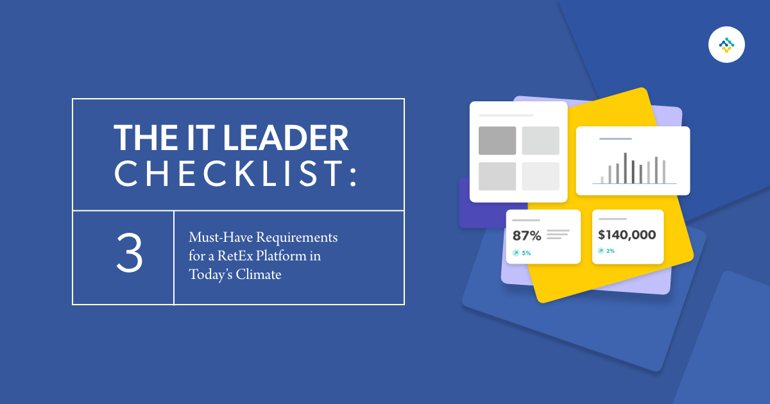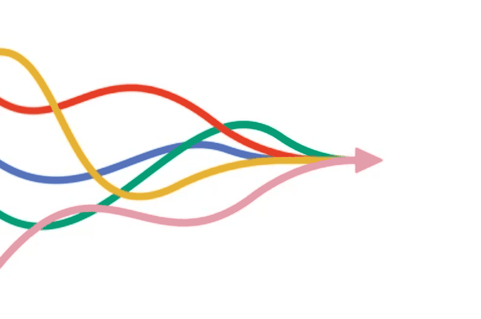Have the past two years had your team feeling like your current visibility and control over your company’s retail execution is limited? Inflexible? Have any Sales or Marketing business leaders wanted to pivot their strategies and teams but felt limited to what their tools allowed today? If so, you are certainly not alone.
Recently, many CG companies found they were underinvested and underprepared with their technology to manage through the fast-changing conditions in retail. Many struggled, and lost share to disruptors who were positioned to pivot quickly, and take advantage of the shifting market conditions both on and offline. In 2023 and beyond, many Sales and Marketing Leaders will desire and even demand the ability to quickly see and adapt their field and sales teams to the still-evolving market conditions within the Retail space. A very strong, foundational, well-integrated tech stack can make or break this ability to pivot, and change courses quickly.
In this blog, we’ll delve deeper into three key areas CIOs and IT leaders of FMCG companies should focus on to help determine whether their current method of operating and tracking their retail execution is no longer best of breed, and even a potential hazard to their future growth success.
B2B Consumerization of the User Experience
Are your field reps hesitant to use your mobile field app? Does it have a modern UX and consumer-grade feel, or does it look primitive with basic functions? How quickly does the mobile application respond to touch? These are some key questions to get you thinking about the user experience for your team.
A poor user experience within a retail execution platform is the first barrier to success for any field team. When we see CGs or merchandising teams invest in a retail execution platform, nearly all of them already have a CRM in place to track everything up to the last mile, but they’re seeking to better understand how their SKUs are activated in the store. But if the user experience is hard for the field reps to use and collect data from the store, they’re not going to want to use it and will find other ways to solve problems by sending emails, and the brand ultimately suffers when little to no data is collected.
Unfortunately, in the CPG space, we’ve seen this take place time and time again. This is a huge miss. A company rolls out a retail execution application that is difficult for the team to use, and they get poor data back as a result. The user experience of your retail execution platform is crucial to the quality of data you will ultimately receive from it.
Your user experience should be similar to other current mobile applications your reps regularly use. If the user experience of your retail execution platform is easy to pick up and understand, your field reps will use it without complaining. The more useful the user experience, the better the data is you’ll receive as a result. Another benefit? Your field reps will probably be a lot happier.

Integrations
Does your retail execution platform have pre-built integrations for major ERP or CRM platforms and published REST APIs?
Long before an IT leader even considers a potential retail execution platform, they’ve already spent hours mapping their current applications – what’s at the core, their CRM, ERPs – and mapping how they’ll integrate together and work in sync. So with any new system, the question always is- can it easily connect into the core because the last thing any IT leader wants is a system out on an island, or running rogue without their involvement.
Your business is happening at volume, and moving quickly - so your data needs to be connected and fast-moving too. Ideally, any retail execution platform you choose should fit within the systems you use today. Your retail execution platform should not create additional barriers for your team to get deployed – it should fit into the design you’ve already established.
Is your retail execution software hosted in a top-tier cloud platform provider using such services as cloud-based backups and cloud-based redundancy, for failover across servers and regions?
This is all about risk mitigation. As an IT leader, you design and deploy systems with high reliability and redundancy. Would you ever risk your data integrity on something that's not best-in-class architecture? No, never. If all of your other services have best-in-class redundancy, you can't afford to have something that doesn't work on the same level of quality.
It's a pretty quick test to as “Are you hosted on a top-tier cloud platform provider?" And using the common industry standards to reduce risk – primarily of downtime and of data loss – because that's going to be the fastest way for business partners to lose faith in an IT leader.
If you choose a platform where there's an outage or there's a problem where you can't restore quickly or can't get back online quickly – you can run into issues. It all comes down to the risk of data loss and service. You're trying to reduce that by making sure that you're working with a best-in-class provider.
Does it run on all modern platforms, i.e. Windows, Mac, Android, iOS in both phone and tablet form-factors?
If your retail execution platform can’t run on every modern platform used today, it may be time to explore a new solution. The last thing you want to worry about is figuring out if everyone on your team is even capable of using the platform on their device. Make sure that your vendor is committed to running on and supporting all platforms.
From what we’ve seen from the market, your field teams should be able to change devices if needed, without having to worry if they’ll still be able to access the same programs and apps tomorrow. Buying 200 field reps new iPads just so they can all use the same system is a costly expense your team can certainly avoid.
Rollouts
Do your Field team business leads feel paralyzed when rolling out new programs because they take months to enable through your systems?
If you answered yes to this question, then it’s absolutely time to reassess your retail execution platform. We're in this era of applications where teams should be able to gain value quickly, almost immediately. The big, heavyweight implementations of 20 years ago with tons of customization, writing of custom code, test, test, test, and finally deployment - are long in the past.
A modern retail execution platform should have zero custom code development. Yes, zero. All of your customizations should be handled through a configuration that you, the customer, can control. With the customer in complete control of the configuration, implementation and set-up time should be minimal, and there’s no risk of breaking code. That means new programs are self-service and can roll in days, not months.
Flying employees to an office to train the teams for two days on a new application is long over as well. With field reps coming on and off your teams every week, training has to be something that happens in minutes, not days, so your reps are productive in the field immediately.
If you aren’t confident, or happy with your answers to any of these questions, then it may be time to talk with your team and business leaders about exploring options for a more modern, nimble solution. It’s time to explore a retail tech stack with some shelf life.






